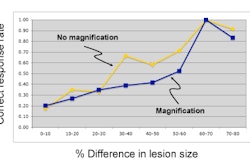The C in PACS stands for communication, and that includes personal communication as well as technical communication, according to Dr. Khan Siddiqui, chief of imaging informatics and cardiac CT/MRI at the VA Maryland Healthcare System in Baltimore.
There are two main components of communication within PACS: the internal system communication with the database, archive, and client, as well as the external system communication with systems such as the HIS, RIS, and speech recognition. PACS also accommodates communication with oneself, technologists, peers, and referring physicians, Siddiqui said. He discussed the importance of communication during a refresher course at the 2007 RSNA meeting in Chicago.
Effective communication is necessary and critical to medicine and patient care, he said. In late 2005, the American College of Radiology (ACR) revised the practice guideline for communicating imaging findings, stating that the timely receipt of the report is more important than the delivery method, and that the "communication of information is only as effective as the system that conveys the information."
Informatics can be a solution to solving communications problems, Siddiqui said. At the University of Maryland, informatics is used to enhance workflow, deal with unsigned reports, facilitate resident review, help with systems integration, bill 3D procedures, handle on-call coverage, page radiologists, educate, and communicate with physicians, according to Siddiqui. It's also used to tackle issues such as reporting critical findings, issue submission, electronic paging, and issue tracking.
A digital dashboard application can provide a big-picture view of all the department activities, allowing for immediate action to deal with any bottlenecks, he said.
Maintaining relevance
Informatics may even help deal with challenges to the relevance of radiologists, for example when emergency physicians review imaging studies. In emergency imaging procedures there are opportunities for discrepancy and miscommunication at each step, from image acquisition by the technologist, preliminary review by the emergency physician, preliminary review by the radiology resident, and final review by the attending radiologist, Siddiqui said.
Seeking to characterize radiologists' ability to provide interpretations before the emergency department physician looked at the studies, the University of Maryland researchers logged three months of PACS events between January 1, 2006, and April 5, 2006, tracking study arrival time, study viewed time, the viewer, and report arrival time. The study team logged 357,093 separate events and included 9,384 studies in the dataset.
Sixty-four percent of the cases were first reviewed by a radiologist, while 32.9% were first reviewed by an emergency department physician, Siddiqui said. In addition, only 51.3% of cases had an interpretation available at the time the physician reviewed the study.
The mean time from study arrival until initial radiologist review was 21.83 minutes, compared with 21.73 minutes for emergency department physician review. The physicians are reviewing cases soon upon their arrival in the PACS, and view studies concurrently with or even before the radiologists, he said.
Quality service in an emergency setting may require multiple systems, including policies, timely reporting, discrepancy handling, and ways to capture emergency physician work product related to imaging, according to Siddiqui.
In another recent study conducted at the Baltimore VA Medical Center, researchers examined the effect of direct communication of abnormal imaging findings on imaging follow-up by referring physicians. The radiology administrative office compiled a database of recommendations by staff radiologists for radiologic follow-up from all imaging modalities recommended over 15 months.
Of the 56,083 total studies performed, 1,650 abnormal imaging reports were telephoned to referring practitioners with recommendations for follow-up procedures between September 2005 and December 2006. Of these abnormal imaging reports, 153 (9.3%) had no evidence of imaging follow-up even after multiple communication encounters with the referring physician, Siddiqui said.
The researchers concluded that direct communication of abnormal findings and follow-up recommendations does not necessarily ensure that clinicians will follow through with additional imaging studies on their patients. They also believed that automated tracking systems could provide an audit of communication and receipt of abnormal findings, as well as offer feedback on follow-up.
The future of communication
In the future, radiologists' communications will involve communicating directly with patients, according to Siddiqui. "Soon (we will be asked) to directly interact with the patient at the time of interpretation," he said.
These changes will be instigated by patient demands, and may involve interaction through social networking or direct patient consultations, he said. Siddiqui also believes this trend could include adoption of a patient-centric health record, such as Microsoft's HealthVault platform.
By Erik L. Ridley
AuntMinnie.com staff writer
February 7, 2008
Related Reading
Clinicians still need access to older imaging studies, December 10, 2007
Radiologists' job stress linked with computer competence, survey finds, November 29, 2007
Communicating abnormal findings to clinicians may not ensure follow-up, November 28, 2007
Consumer displays compare well with medical-grade displays, November 27, 2007
Developing a cost-effective image QA workflow with PACS, November 21, 2007
Copyright © 2008 AuntMinnie.com



















